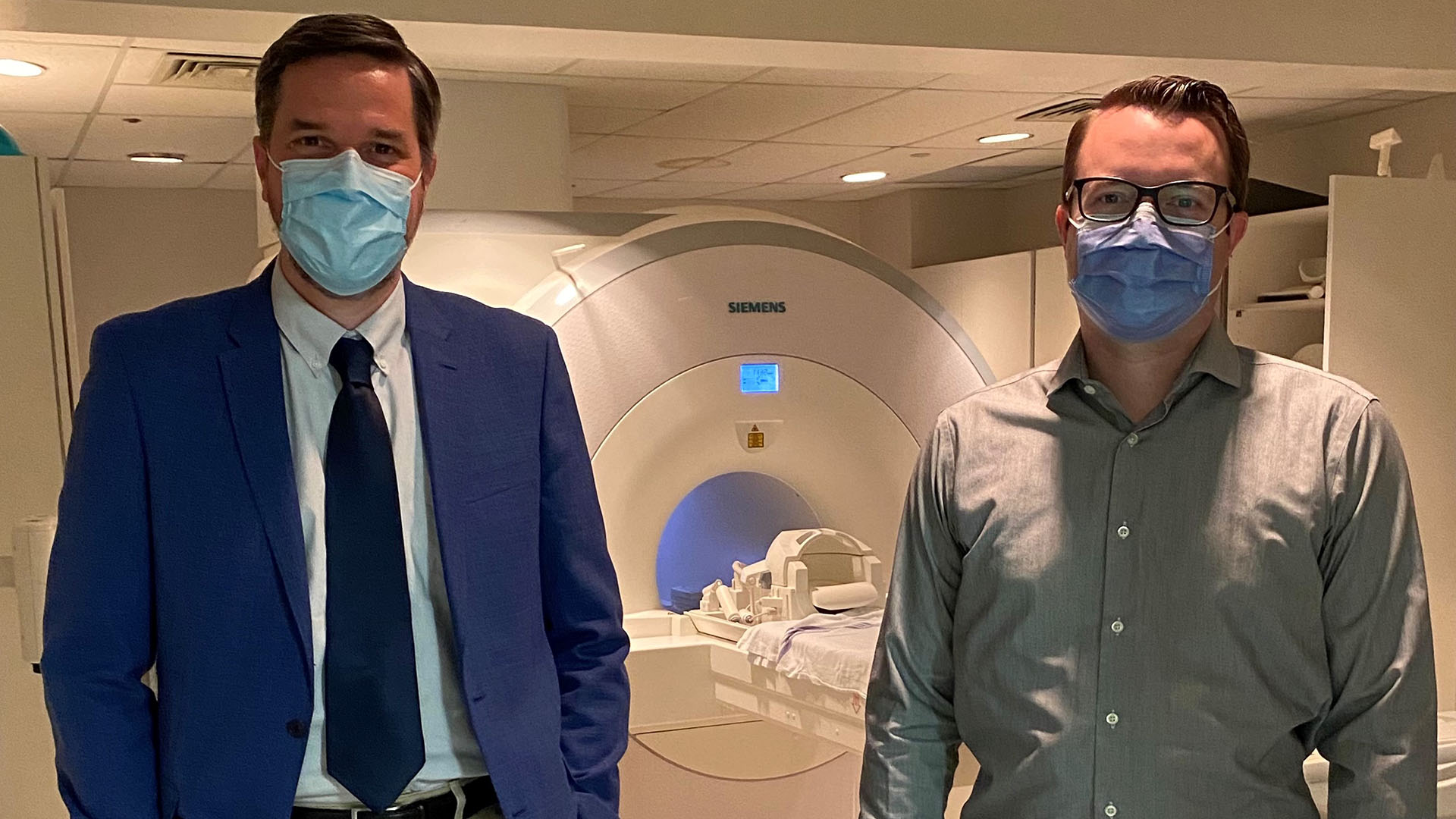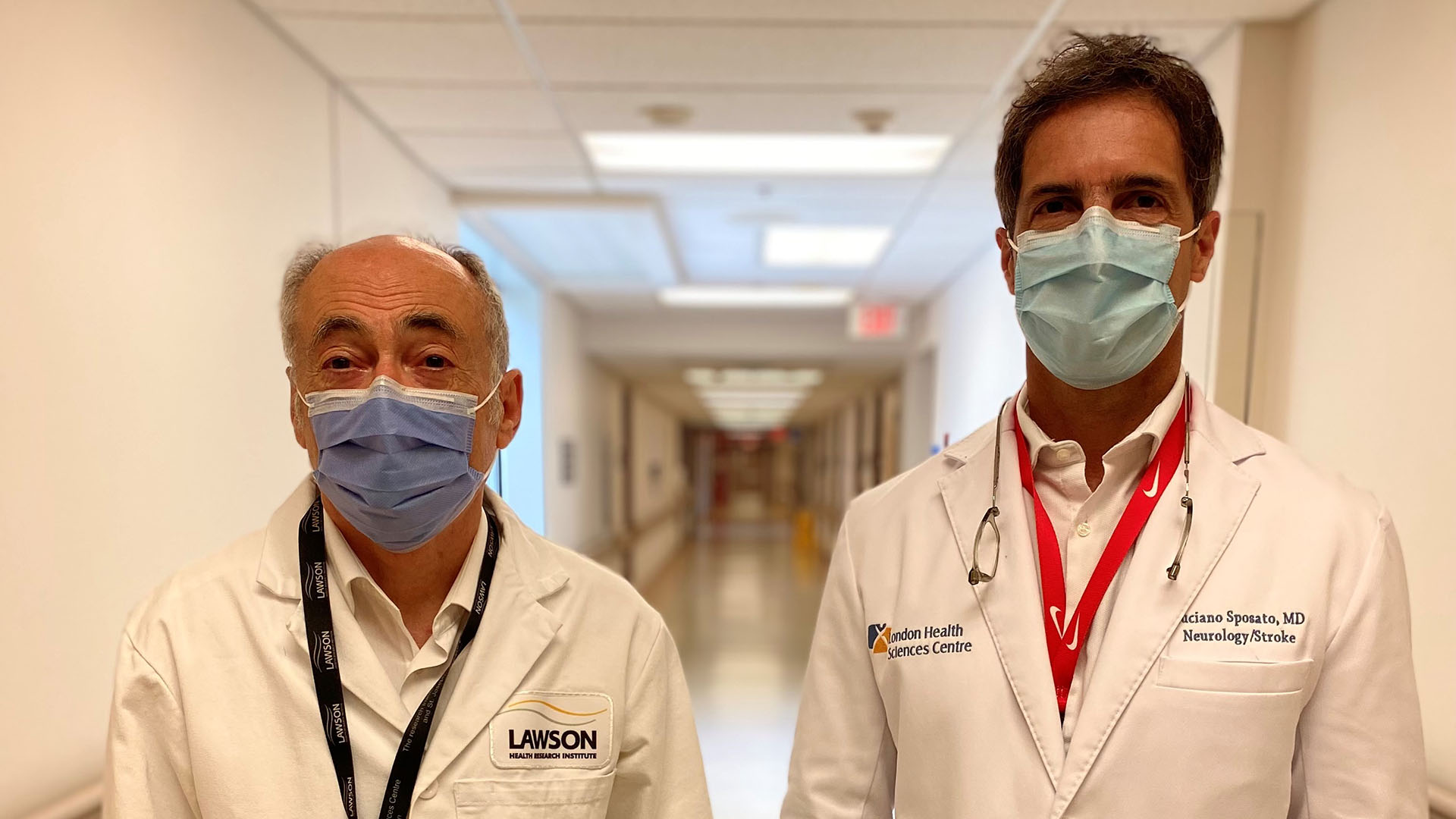Strategic Research Fund Award 2022
Lawson Strategic Research Fund winners using imaging to improve patient care and outcomes
Researchers are using advanced imaging in the areas of hip replacement surgeries and stroke
Scientists at Lawson Health Research Institute are being recognized for their advanced imaging work by winning two Strategic Research Funds which will supports projects that advance science and generate high impact health solutions for patients.
Using advanced imaging to improve hip replacement outcomes
Lawson Researchers are using PET/MRI to better understand negative reactions in patients who have had total hip replacement surgery.
“Hip implants are typically made with metal and plastic parts that sometimes wear down and releases particles into the body. This is known as particle wear,” says Dr. Matthew Teeter, Lawson Scientist. “While this doesn’t affect all patients, some have a high reaction to even the smallest of particle wear and some don’t. We are looking to determine what factors are involved in that, and how can we treat or help those with the reaction.”
Reactions to particle wear following a hip replacement can lead to revision surgery, where the hip implant has to be taken out. This is both a costly and painful procedure.
“Reactions can cause bone to be absorbed around implants, causing them to come loose,” explains Dr. Teeter, who studies hip implants in Lawson’s Implant Retrieval Laboratory located at London Health Sciences Centre’s (LHSC) University Hospital. “Other patients may have an allergic reaction where soft tissue muscles and tendons deteriorate. This can even lead to a tumor in the joint.”

By utilizing advanced PET/MRI imaging technology, Lawson’s Imaging team at St. Joseph’s Health Care London, researchers will image 16 patients needing hip replacement revision surgery to examine particle wear and what is happening structurally inside the joint.
“With PET/MRI we can non-invasively examine particle wear, including inflammation around hip replacements,” says Dr. Jonathan Thiessen, Lawson Imaging Scientist at St. Joseph’s. “We are aiming to use PET/MRI to better understand how different patients respond to hip implants, and the impacts of particular wear. We will measure inflammation, and in the future, use this to information to guide therapies that target inflammation and also improve implant design.”
Improving outcomes for stroke patients
PET/MRI technology is also being used by another group of Lawson researchers to study inflammation that sometimes occurs in the heart following a stroke.
“In Ontario approximately nine per cent of stroke patients develop cardiovascular complications,” explains Dr. Luciano Sposato, Lawson Scientist and Neurologist at London Health Sciences Centre (LHSC). “We have long suspected that these complications may be caused by inflammation. This study will leverage imaging technology to determine whether or not that is the case.”
The team will examine eight stroke patients and four individuals without stroke to determine the connection between stroke and potential cardiovascular disease.

“We will be using some of the most advanced PET/MRI technology in the world at St. Joseph’s to look at inflammation and scaring in the heart before any other symptoms arise,” says Dr. Frank Prato, Scientist at Lawson and Lead for the Lawson Imaging research program. “The PET imaging will show us inflammation and the MRI will show us whether that damage caused by inflammation is permanent. By improving our understanding, we aim to prevent future permanent heart damage in stroke patients.”
Dr. Sposato hopes the results from this proof concept study will escalate to a much larger study down the road.
“If we can show that the heart develops inflammation after stroke, we may be able to trial drugs used for other conditions that can stop the inflammation process and avoid this complication,” adds Dr. Sposato.
The annual SRF was established by Lawson in 2014 to help fund research projects that will advance science and generate high impact health solutions for patients.

